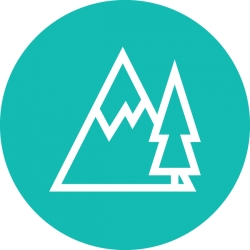Strategies for
Key Strategies
- Collaboratively and efficiently determine the appropriate locations for various uses (recreation, agriculture, preservation, energy, etc.) of Utah’s public lands.
- Identify, preserve, and provide access to Utah’s natural, historic, and cultural treasures for today’s residents and for future generations.
- Create and implement a plan to ensure adequate recreational access and facilities (e.g., campgrounds, trails, picnic areas, and parking lots) are available to maximize Utahns’ access, promote tourism, and minimize crowding and overuse.
- Manage grazing and agriculture to improve rangelands and watersheds and promote food production in Utah.
- Promote energy development (both fossil fuels and renewables), while mitigating impacts to ecosystems, watersheds, and airsheds.
- Consolidate and improve the location of state-owned lands through land trades in order to promote Utah’s interests and enhance recreation, energy development, agriculture, and ecosystem health.
This vision, created by Utahns, for Utahns, establishes a clear context, framework, and direction for policy discussions and actions to achieve the future Utahns want. Although government will play an important role, Utahns recognize that achieving the vision will also require a concerted, cooperative effort by individuals, families, businesses, and other organizations in the private sector.
Strategies
-
Collaboratively and efficiently determine the appropriate locations for various uses (recreation, agriculture, preservation, energy, etc.) of Utah’s public lands.
- Involve all affected parties, particularly local leaders and residents, to ensure all viewpoints are represented.
- Establish a balanced mosaic of uses, each occurring in appropriate areas.
- Quickly address Utahns’ concerns, including the concern of providing economic opportunities to rural Utahns and their families.
- Seek federal, state, and local legislation and policy changes as necessary.
-
Improve recreational access so Utahns and visitors can enjoy Utah’s beautiful public lands.
- Create and implement a plan to ensure adequate recreational access and facilities (e.g., campgrounds, trails, picnic areas, and parking lots) are available to maximize Utahns’ access, promote tourism, and minimize crowding and overuse.
- Avoid alterations that unduly impact the natural character of public lands.
- Provide places for high-impact recreation (e.g., use of off-highway vehicles) without unduly affecting ecosystems, watersheds, and other recreational users.
- Investigate the possibility of adding a new state or national park to increase tourism revenue and alleviate crowding in existing parks.
-
Promote responsible development of energy sources (both fossil fuels and renewables).
- Avoid energy production in sensitive areas or popular recreation areas.
- Implement energy production techniques that avoid, minimize, and mitigate impacts to ecosystems, watersheds, and airsheds.
-
Manage grazing and agriculture to improve rangelands and watersheds and promote food production in Utah.
- Improve rangeland management and explore new rotational grazing techniques to increase grazing efficiencies.
- Partner with state and federal agencies to put some public lands into crop production.
-
Consolidate and improve the location of state-owned lands through land trades in order to promote Utah’s interests and enhance recreation, energy development, agriculture, and ecosystem health.
-
Identify, preserve, and provide access to Utah’s natural, historic, and cultural treasures for today’s residents and for future generations.


